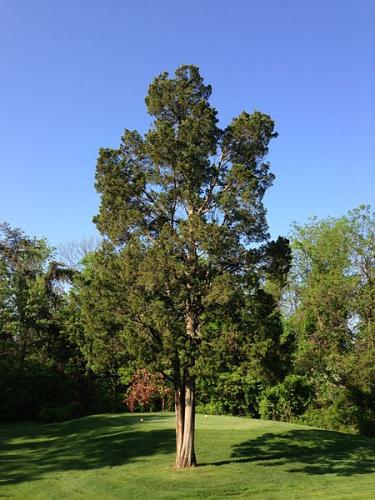Red Cedar Trees Make an Excellent Living Fence

You may have decided that your property could benefit from a little privacy but aren't certain which option is best for you. If that's the case, consider planting red cedars along your property line to create a privacy screen that is both attractive and effective. In this article we'll talk about the benefits of using these evergreen trees to ensure a year-round living fence and explore some of the facts about red cedars.
Facts and Foliage
There are two types of cedar trees, both indigenous to North America, neither of which is actually a member of the cedar family. Both species have a swift growth rate and are extremely hardy conifers with lush green foliage that won't fade with the season.
Eastern Red Cedar
Eastern red cedar (Juniperus virginiana) has traditionally held less commercial value for tree farmers, but thrives in a number of growing conditions and hardiness zones 2 - 9. Once mature, these will often reach a height of 40 to 50 feet, with an impressive girth of up to 20 feet. It produces an abundance of small cones that provide birds and animals wild forage during the winter months, and provides sheltered spaces for nests and animal burrows, making it a perfect tree to help sustain your outdoor neighbors.
Plant these beauties in a sunny spot, in deep, moist, and well-drained soil for best results. Though they will thrive in wetland or drier, rockier soils, as well, and act as an effective windbreak and privacy screen.
Western Red Cedar
Western cedar (Thuja plicata), also known as arborvitae, occurs naturally in the Pacific Northwest and along the western slopes of the Rockies. In this native range, it can grow as tall as 200 feet tall, but when cultivated elsewhere it typically only reaches a height of 75 feet with a girth of up to 25 feet. It will often have a forked appearance at the top, with dual growing tips, and tend to abort its lower branches with advanced age or in excessively shady locations.
Plant these trees of life in stable, moist, and well-drained soil for optimum results. They thrive in regions where the summers are cool and damp, and the winters are wet and not bitterly cold.
Either of these species create an attractive boundary, with distinctive advantages over traditional privacy fences. They require no additional upkeep expense, provide nesting grounds and food sources for wildlife, and help to mitigate our impact on the environment.
